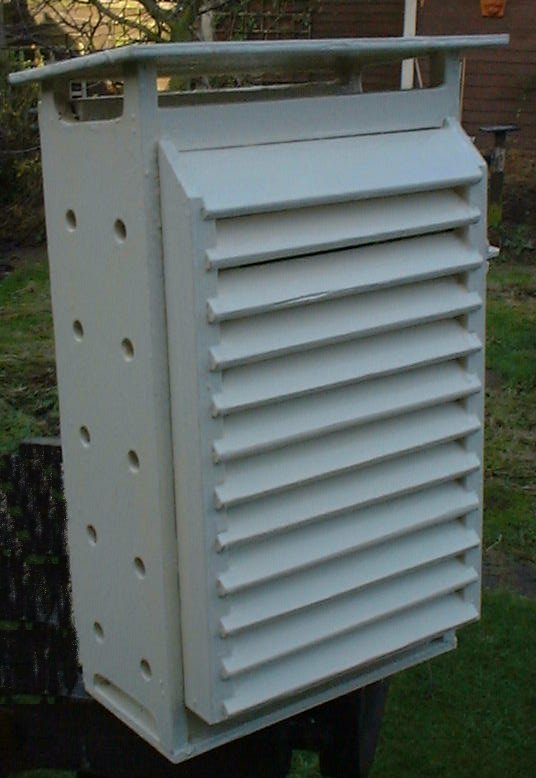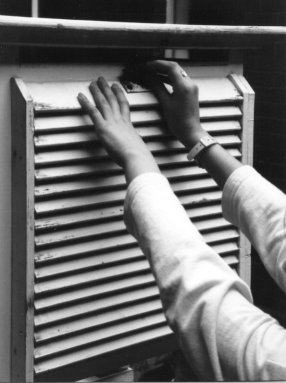Setting up Your Weather Station
Setting up your weather station can be a daunting task. These hints may make the task easier. Read all of the sections before starting to set up your weather station.
The Stevenson ScreenThe Stevenson screen was invented by Thomas Stevenson (the father of the famous author of Kidnapped). Its main purpose is to allow the cold and warmth of the temperature to penetrate whilst preventing direct sunshine, wind or rain. This is done by having angled slats around the sides, and a double roof. |
 |
SecurityIt is better to compromise the quality of the weather data collected than risking the damage of equipment by unwelcome visitors. One of the best places in schools is in a courtyard within the school buildings. This affords some protection from outsiders. |
 |
LocationThe ideal location is one where the distance from any object is 2.5 x the height of the nearest tree or building. This means that the trees or buildings will not act as a shield, making the measurements unrepresentative. This is applicable to the Stevenson screen and the rain gauge. Bearing in mind other factors (see above) some compromise may have to be achieved. |
 |
The Stevenson ScreenThe door of the screen should face north so that when it is opened the sun does not shine on the instruments. (This relates to weather stations in the northern hemisphere.) When weather monitors want to look at the instruments they should gently open and lower the door. Rough handling can cause the instruments to give false readings. |
 |
MaintenanceThe water reservoir on the wet and dry thermometers needs to be kept topped up. The indicating liquid in the thermometers needs to be monitored, in case it becomes separated. The rain gauge needs to be kept clean. The Stevenson screen itself needs to be wiped occasionally to remove soot and pollution. |
 |
General NotesA system needs to be set in place whereby only teachers and pupils under supervision
are allowed access to the weather station. This is to prevent
interference in the form of emptying or filling rain gauges,
resetting maximum
and minimum thermometers and general damage. |